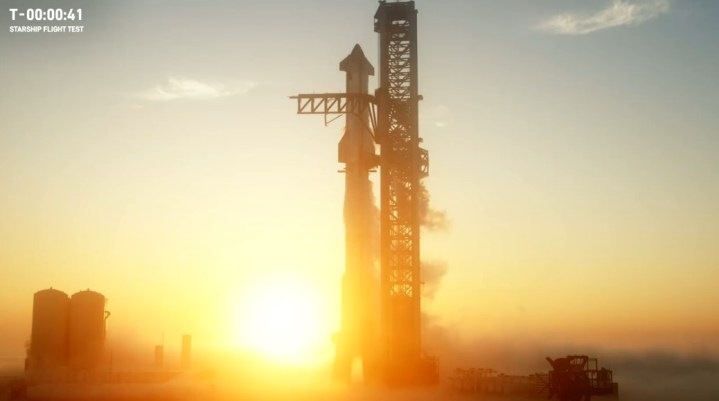SpaceX has performed a second integrated test flight of its Starship, the world’s most powerful rocket. The Starship made it off the launchpad and survived through stage separation, but communication with the spacecraft was lost near the end of its engine burn.
The rocket made it further in this test than it did in its previous test flight in April this year when it took off from the pad, but exploded before stage separation.

The launch took place at SpaceX’s Starbase facility in Boca Chica, Texas, on Saturday, November 18. There was a short pause when the countdown clock was halted at T-40 seconds due to a pressurization issue, but then the Starship was able to liftoff successfully. The Starship also separated from its booster using a new stage separation method called hot-staging, with the aim of recovering the booster, but shortly after separation, the booster exploded.
The loss of the booster was not entirely unexpected, and the Starship continued on its flight and came close to reaching orbital velocity, with the goal of making a trip around the globe rather than going into orbit. But then contact was lost for reasons which are still unclear.
“Starship successfully lifted off under the power of all 33 Raptor engines on the Super Heavy Booster and made it through stage separation. The booster experienced a rapid unscheduled disassembly shortly after stage separation while Starship’s engines fired for several minutes on its way to space,” SpaceX wrote in a statement on its website.
The statement did not make mention of the status of the second stage of the Starship, which is thought to have been lost.
“We have lost the data from the second stage. We heard a callout that we were in internal guidance which means that we were getting near the end of the approximately six-minute burn of Starship, but we haven’t gotten any more data since then, so we think we may have lost the second stage,” a SpaceX commentator said during the livecast.
The loss of the spacecraft was given preliminary confirmation by the Federal Aviation Administration (FAA), which said in a statement, “A mishap occurred during the SpaceX Starship OFT-2 launch from Boca Chica, Texas, on Saturday, Nov. 18. The anomaly resulted in a loss of the vehicle. No injuries or public property damage have been reported.”
Editors' Recommendations
- SpaceX Falcon 9 booster equals flight record, but no landing this time
- SpaceX slow-motion video shows powerful Raptor rocket engine shutting down
- Watch SpaceX blast its megarocket engines in spectacular test
- Watch SpaceX fire Starship’s Raptor engines ahead of 4th test flight
- SpaceX already has a date in mind for next Starship launch




